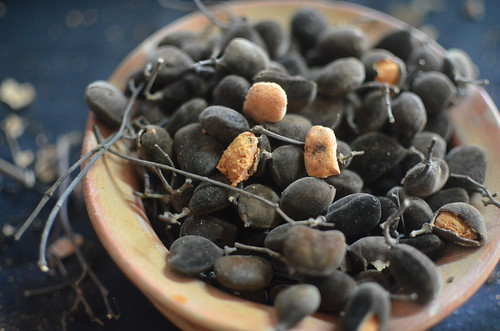By Gloria Agugua Okpara
So, I was driving down Road 14 off admiralty way in Lekki Phase 1, when I sighted this Mallam selling this fruit I remember from my childhood days but never knew the real name. I immediately stopped and bought some. I enjoyed it so much that I went back the next day for more. I then decided to take some to the office and share with my colleagues. I have never seen such excitement for any fruit I shared with them.
Typically, they would respond with phrases like: “you have come again with all this your grass and healthy things”. But to my greatest surprise this was different. They even started arguing about the name because they called it different names. Some said it is called Licky Licky, some said Awin, some said Icheku, another said Tsamiyar kurm. I was so confused that it made me determined to do a research on this little fruit with many names.
I started by putting out a poll on my social media and asked people to share the name of this fruit with me.
Someone responded and said the English name is VELVET TAMARIND and that stuck, I began my research. Below are my findings:

Malaria: According to research, the leaf extract inhibits the growth of plasmodium falciparum which causes malaria therefore, taking a decoction can cure malaria.
Treats Ulcer and Prevents Hypertension: The leaf extract of velvet tamarind has the ability to increase gastric mucus secretion. Therefore, a decoction of the leave can be a remedy for gastric ulcer. The leaves are also highly diuretic-promotes the production of urine, making it easier for the heart to pump blood hence, reducing the risk of hypertension.
Anti-inflammatory and Anti-microbial Properties: The fruit pulp contains abundant vitamin C which fights against microbial infections. The stem bark has the ability to reduce inflammation in bronchial tubes that arises due to bronchitis.
Improves Oral hygiene and cures Tooth ache
The stem used
as chewing stick (indigenous tooth brush) contains saponin which adds cleaning
effect to the teeth and at the same time removes plaques and caries on the
teeth of users. The stem bark decoction is also used to treat.
Reliefs Menstrual Cramp and stops Diarrhoea
The stem bark extract has significant
analgesic property hence, can be used to reduce menstrual pain. You can take it
along with papaya leaf, salt and water to work effectively. It can also stop
diarrhoea.
Jaundice and Diabetes Management
A decoction of velvet tamarind leaves is used
in preparing medicinal solution for curing jaundice. It also lowers blood sugar
and increases insulin sensitivity, hence, can be used to treat diabetes.
Haemorrhoids (pile): Piles are swollen veins in the anal canal caused by too much pressure in the pelvic and rectal areas and while not life threatening, these veins can be very painful. A study performed on ethanolic leaves extract of velvet tamarind showed it to be beneficial for pile treatment.
Velvet Tamarind increases the Antioxidant Capacity of the body: Oxidative damage which involves free radicals – highly reactive molecules with unpaired electrons, is believed to be one of the mechanisms behind ageing and many diseases. The abundance of antioxidants in the leaves helps protect the human body from damage caused by these free radicals when taken.
Improves lactation and checks genital infections
A review of
several studies has concluded that chewing the fruit pulp increase secretion of
milk as well as check infections.
Treats Scurvy and Wounds
The fruit pulp
has high ascorbic acid content which is an anti-scurvy vitamin hence used as
food supplement. Tender leaves of velvet tamarind, when squeezed and applied on
wounds, stimulates the growth of healthy skin and protects the wounds against
germs and moisture.
With all these amazing benefits, don’t you want to experiment as well. You can start by telling me what it is called where you are from.

